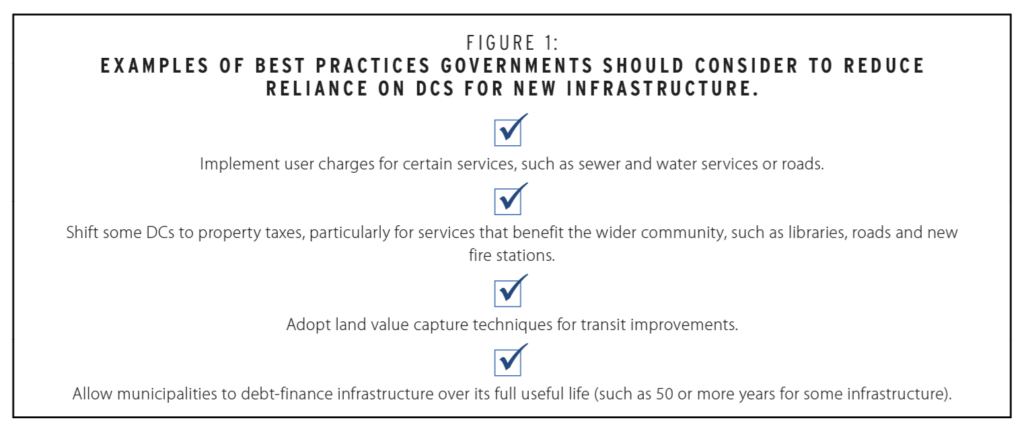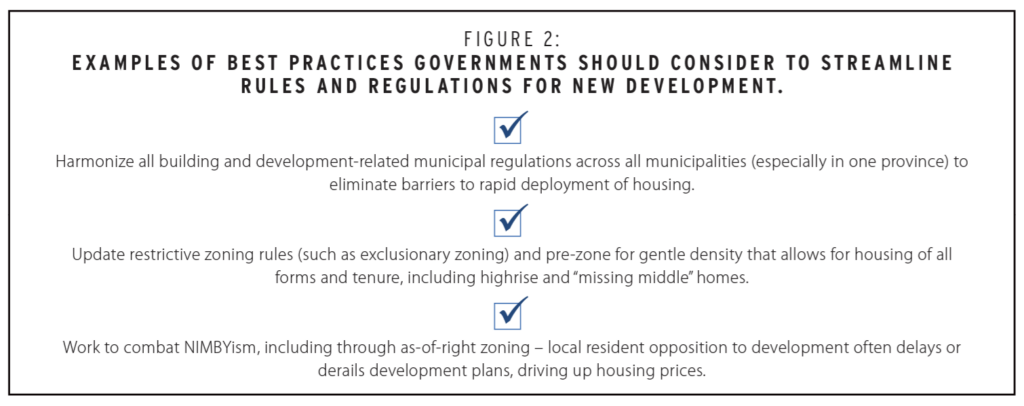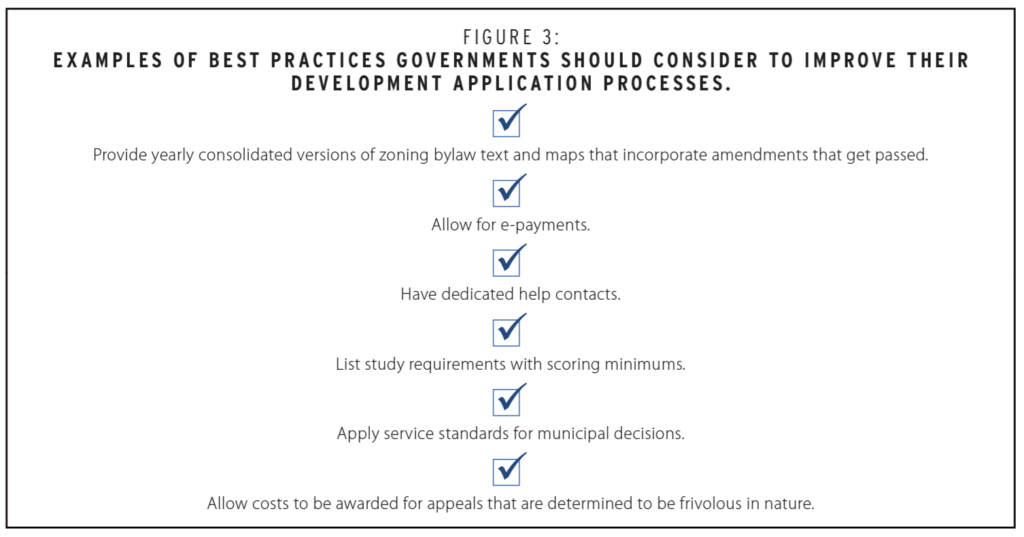By Emily Fielden, Policy and Communications Analyst, CHBA
Best practices municipal governments should consider to support homebuilding in their communities
Housing affordability continues to be a challenge in all parts of Canada, and a major component is the rising cost of building new homes associated with municipalities.
For years, in many if not most municipalities, inefficient processes and approvals, as well as outdated zoning rules, have significantly lengthened development timelines for all types of homes. Meanwhile, municipal development charges (DCs) have been steadily rising, with a national average increase of about 700 per cent over the past 25 years. These factors have significantly added to the cost to build new housing in communities across Canada, and in turn are contributing to higher prices, limiting housing supply, and ultimately eroding affordability.
CHBA’s 2024 Municipal Benchmarking Study, prepared by Altus Group, compares 23 Canadian municipalities and examines how their development charges, approvals timelines, and processes contribute to housing supply and affordability issues in major housing markets across Canada.
The study’s goal is to objectively measure key municipal benchmarks and identify ways to improve, while outlining opportunities for governments and industry to work together to tackle Canada’s housing challenges. In this article, we examine the results of the study and provide high-level examples of the best practices governments should consider to improve housing outcomes and affordability in their communities.
Development charges
Though CHBA has been ringing the alarm bells on this issue for many years, DCs have been an underrecognized major driver of increasing new home construction costs. Cost pressures and a lack of alternative funding models have led to municipal overreliance on DCs to fund critical infrastructure, even when it’s not related to new growth.
There are many ways for municipalities to reduce DCs and support new housing supply and affordability in their communities. Provincial governments, as well as the federal government, also have a key role to play in supporting municipal efforts to reduce DCs.
Figure 1 outlines examples of best practices governments should consider to reduce reliance on DCs for new infrastructure.

Rules and regulations
Though put in place with good intentions by each municipality in the past, today, restrictive bylaws and zoning rules (including “green development standards”) and widely varying municipal requirements and interpretations reduce productivity, slow development and drive up home building costs.
Municipalities, with support from the provincial and federal levels of government, can address restrictive zoning rules and streamline regulations/interpretations to fast-track new home construction and address affordability challenges in their communities.
Figure 2 outlines examples of best practices governments should consider to streamline rules and regulations for new development.

Development application process
Improving the municipal development application process benefits both applicants and municipalities. Time is money – the faster the process goes, the less money is left on the table: Builders aren’t left carrying excessive indirect costs while they wait for approval, and municipal staff aren’t left with piles of red tape bogging down valuable review time.
By creating a smoother development application process for both applicants and municipal staff members, processing times can improve.
Figure 3 outlines examples of best practices governments should consider to improve their development application processes.

For CHBA’s full 2024 Municipal Benchmarking Study, visit chba.ca/municipal-benchmarking.











